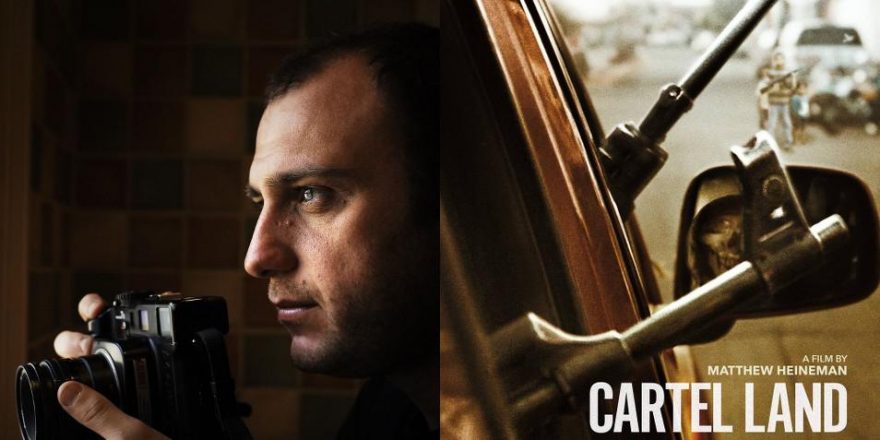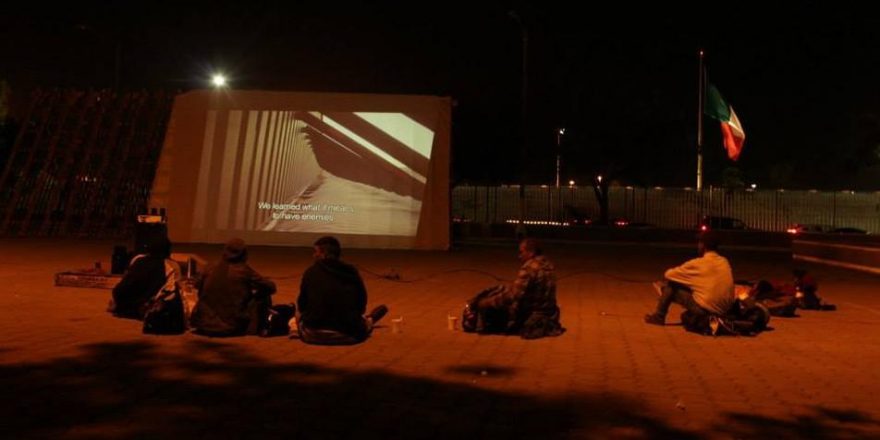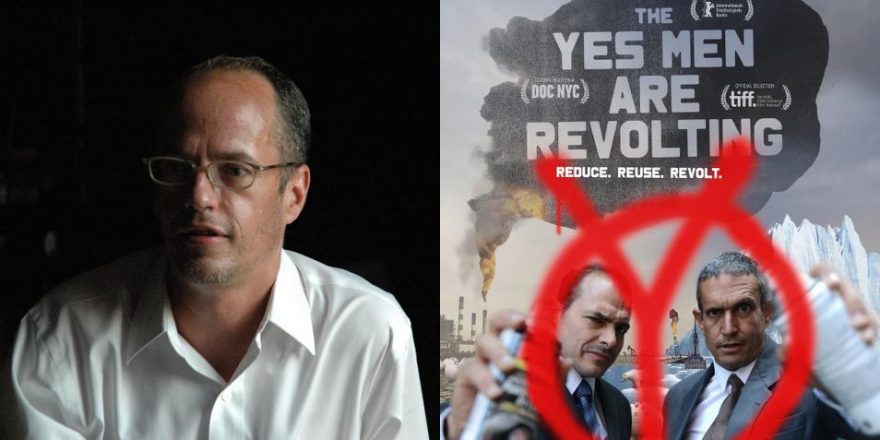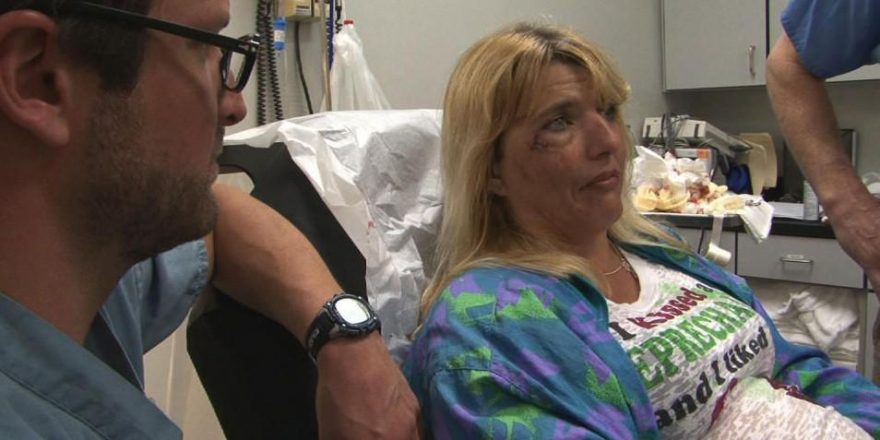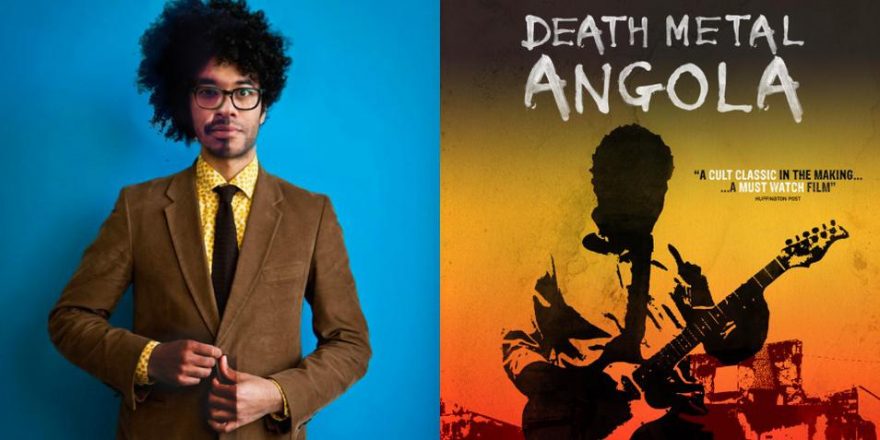First off, I want to congratulate Matthew Heineman on Cartel Land and for having the courage to make it. Not a lot of people throw themselves headfirst into the drug war, and it was so exciting to see someone do that.
The film documents the drug war and vigilante groups on both sides of the border – in Arizona’s Altar Valley and in the Mexican state of Michoacán – who are trying to do something about this unwinnable conflict. On the Mexican side, the central figure is Dr. Jose Mireles, founder of the Autodefensas, a complex character who seems to be a good man, who cares and who, as one person says, has juevos – balls. I was blown away by the access, by the way the film messes with the audience’s mind in terms of who’s the good guy, what’s allowed, what the limits are, and where things go. The confusion, how power corrupts, and how difficult it is to bring hope into the process are also amazingly profiled.
I’ve never seen this kind of access, not even in written material. I worked a couple of years in Mexico as a journalist, and this was the sort of thing you would hear of, but it’s incredibly rare for anyone to capture it on tape. In these door-to-doors and gun battles, we are kept on the edge of our seats. The behind-the-scenes access to Dr. Mireles felt so genuine. Seeing him break towards the end of the movie, having the lav mic running when he’s talking to a lover, or going to an Autodefensas meeting and saying, “We’ve done wrong” – to actually get those moments on tape is remarkable. As somebody who’s worked there and seen the mass devastation caused by the cartels and knows how hard it is to operate, I take my hat off.
A couple of the scenes in Cartel Land are mind-blowing, such as when a suspected narco is taken from his crying daughter, and we see the closeness and the emotional impact of the separation. And then immediately after, the shots of the Autodefensas beating and interrogating people. It’s unreal. We simply haven’t seen that before. If you’ve covered the Mexican drug war, you understand how power is so corrupt, but nobody gets in there and shows you that. To see it is compelling and genuinely haunting.
Cartel Land had me near tears a couple of times. What we see is so real.The visceral impact of the film is so important, because people get used to stories of the drug war and stop caring. One of the reasons you cover these stories as a journalist is to try to capture the complexity of the situation and bring it home to readers – the understanding that the guns and the money and the demand and the circulation all come from here in the U.S. Seeing the Mexicans naively try to believe in the vigilante movement and how it all shreds apart, it’s such a hard reality. Cartel Land had me near tears a couple of times. What we see is so real; in all that nastiness, you ache for the good people, who are the majority.
On a cinematic level, the cinematography, the cross-cutting and a lot of the visual language in Cartel Land hit close to home. As a still photographer and a very visual storyteller, I care a lot about those things. I always joke that I used to hate documentaries growing up because documentary filmmakers make their films so ugly. It’s OK to have a documentary about a serious issue be cinematic and entertaining. To me, it’s a huge goal in everything I do, and it was certainly what I tried to achieve on Narco Cultura, when I was a running-gunning guy with a Canon 5D and a sound mic. Cartel Land brilliantly mixes run-and-gun footage with produced aerial shots and time lapses. The movie keeps moving at a great pace and looks good, and makes you feel you’re on the front lines. Eighty to ninety percent of documentaries never achieve that, and certainly not on a subject like this. It’s masterful, and an example to show people they should not settle, that you can run and gun and get tough access and still feel big and cinematic.
My one criticism of the film is that I found the American side of the story to be much weaker than the Mexican side; Tim “Nailer” Foley has a great voice and look, but there wasn’t the same access and things didn’t really go anywhere. It’s smart to juxtapose the U.S and Mexican vigilante groups, but the conditions that set up the comparison couldn’t be more different. In Michoacán, the story was very real and it was about a situation getting out of control. In Arizona, Nailer is angry about illegal immigrants and drug mules and so takes the law into his own hands. But whereas ninety percent of Mexicans deal with the fear and frustration of having the cartels impacting their lives, in the U.S. almost no one is affected.
When I was making Narco Cultura in Juárez, it was a silent war. I accompanied men who collected the dead bodies, but I did not see gunshots. I’m a conflict photographer, so I wanted to show what was actually going on, but it was so hard to get and so dangerous. The most haunting thing in Juárez, in covering the situation there for four years, was that you would see people drop dead, but rarely would the police ever ask, “Hey, did anybody see anything? What car did the bad guys have?” The fear is so deeply ingrained, and civilians and law enforcement are beaten down. They are nothing in the hands of the monster. They’re scared to do anything, and so they don’t. In Cartel Land, it was tremendous to see the people arguing, to see their frustration and excitement. The drug war is such a big issue in modern Mexico’s history, and what’s depicted here separates it from everything else that’s been done.
Everybody who has covered the cartels wants to talk to the narco. In the closing scene of Cartel Land, we not only get an interview with a narco, but we’re also shown the system and all its complexity. When the film ends and you understand the loop that has closed, it’s an incredible payoff.


